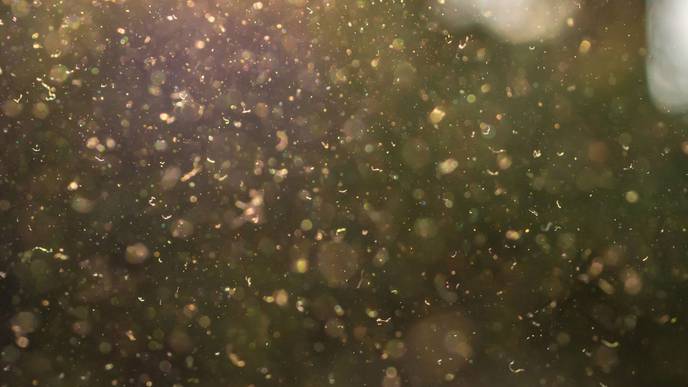ReachMD
Be part of the knowledge.™How Many People Suffer from Environmental Allergies Might Surprise You

Allergy issues
With record rains and beautiful flower blooms comes a lot of irritating pollen.
Californians, and particularly Southern Californians, are lucky that compared to a lot of states, the allergy season is much milder because of the dry climate. But this winter is different, and pollen rates might be higher than many years.
About 1 in 5 Americans are diagnosed with environmental allergies and more than 50% say allergies impact their daily quality of life.
The National Allergy Bureau says, “California has the highest number of populated metropolitan areas in the top 10. Sacramento, San Diego, San Francisco are also listed on the “Better Than Average” list, making California one of the best states for people living with pollen allergies.”
California’s coastal weather and low pollen concentration make it a top-ranked state for allergy sufferers.
You can find the pollen count in your ZIP Code at pollen.com.
How pollen is measured
Pollen count measures the grains of pollen per cubic meter of air using a standardized calculation. Pollen counters use an air-sampling device called a rotarod to collect pollen for 24 hours.
The device uses clear silicone rods coated in grease to attract and retain pollen. Scientists then analyze the collected materials, checking for the types of pollen and their concentration levels over a given 24-hour period.
There are also designated pollen seasons, during which time pollen counters collect their figures.
Pollen counters consist of individuals who received specialized training through the National Allergy Bureau.
Mapping the year
The image below is of pollen data from the National Allergy Bureau, a section of the American Academy of Allergy Asthma & Immunology’s Aeroallergen Network. The NAB collects and manages distribution of pollen data collected at the NAB stations.
Pollen stations are run by AAAAI member volunteers and are self-funded.
The image is from the report: “Pollen calendars and maps of allergenic pollen in North America” by Fiona Lo, Cecilia M. Bitz, David S. Battisti and Jeremy J. Hess.
When is the California allergy season?
California allergy season is typically from late January to early November.
What are the worst months?
March/April are the worst for trees, May is the worst for grass, and August/September are the worst for weeds.
Tree pollen is dominant, contributing 94% of the total sample of identified pollen.
The mustard menace
In 1968, California made its official state nickname the “Golden State,” referencing its gold rush.
But if you didn’t know better, you might think the designation was inspired by the proliferation of another bright yellow plant that dominates California’s landscape — Brassica nigra, aka black mustard.
The mustard plants are non-native, invasive species from Europe.
The mustard out-competes the natives, fighting them for water, ground space and nutrients.
SCNG
The spread of black mustard can increase the frequency of fires in chaparral and coastal sage scrub, changing these habitats to annual grassland.
How it got to Southern California and became so widespread is a matter of debate.
A story often told is that Spanish missionaries planted mustard along El Camino Real, the better to see the mission road in spring. But whether the introduction was accidental or on purpose is undetermined.
The plants can grow over 6 feet tall and in summer they are a dry, brown source for wildfires.
Do I need meds?
Allergy medications are available as pills, liquids, inhalers, nasal sprays, eye drops, skin creams and shots.
Some are available over-the-counter; others are available by prescription only.
Here’s a brief summary of some of the types of allergy medications from the Mayo Clinic:Antihistamines
Antihistamines block histamine, a symptom-causing chemical released by your immune system during an allergic reaction.
Antihistamines that tend to cause drowsiness include:DiphenhydramineChlorpheniramine
These antihistamines are much less likely to cause drowsiness:Cetirizine (Zyrtec, Zyrtec Allergy)Desloratadine (Clarinex)Fexofenadine (Allegra, Allegra Allergy)Levocetirizine (Xyzal, Xyzal Allergy)Loratadine (Alavert, Claritin)
Get your doctor’s advice
Work with your doctor to choose the most effective allergy medications and avoid problems.
Even over-the-counter allergy medications have side effects, and some allergy medications can cause problems when combined with other medications.
Sources: American Academy of Allergy, Asthma & Immunology, California Invasive Plant Council, pollen.com, Centers for Disease Control and Prevention, National Allergy Bureau
Recommended
Assessing the Asthma Management Guideline Updates
The Drug ReportAssessing the Asthma Management Guideline Updates



Facebook Comments